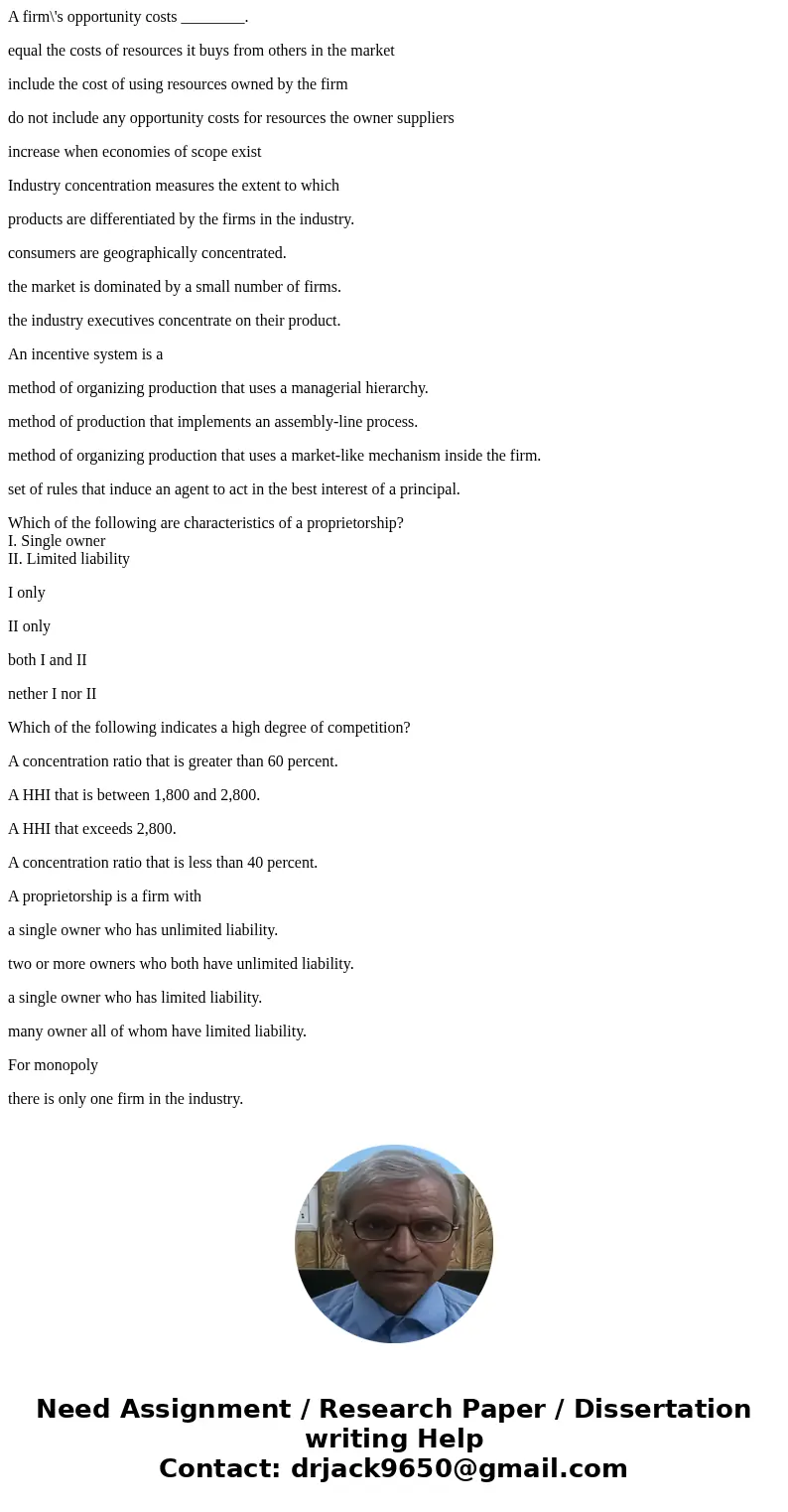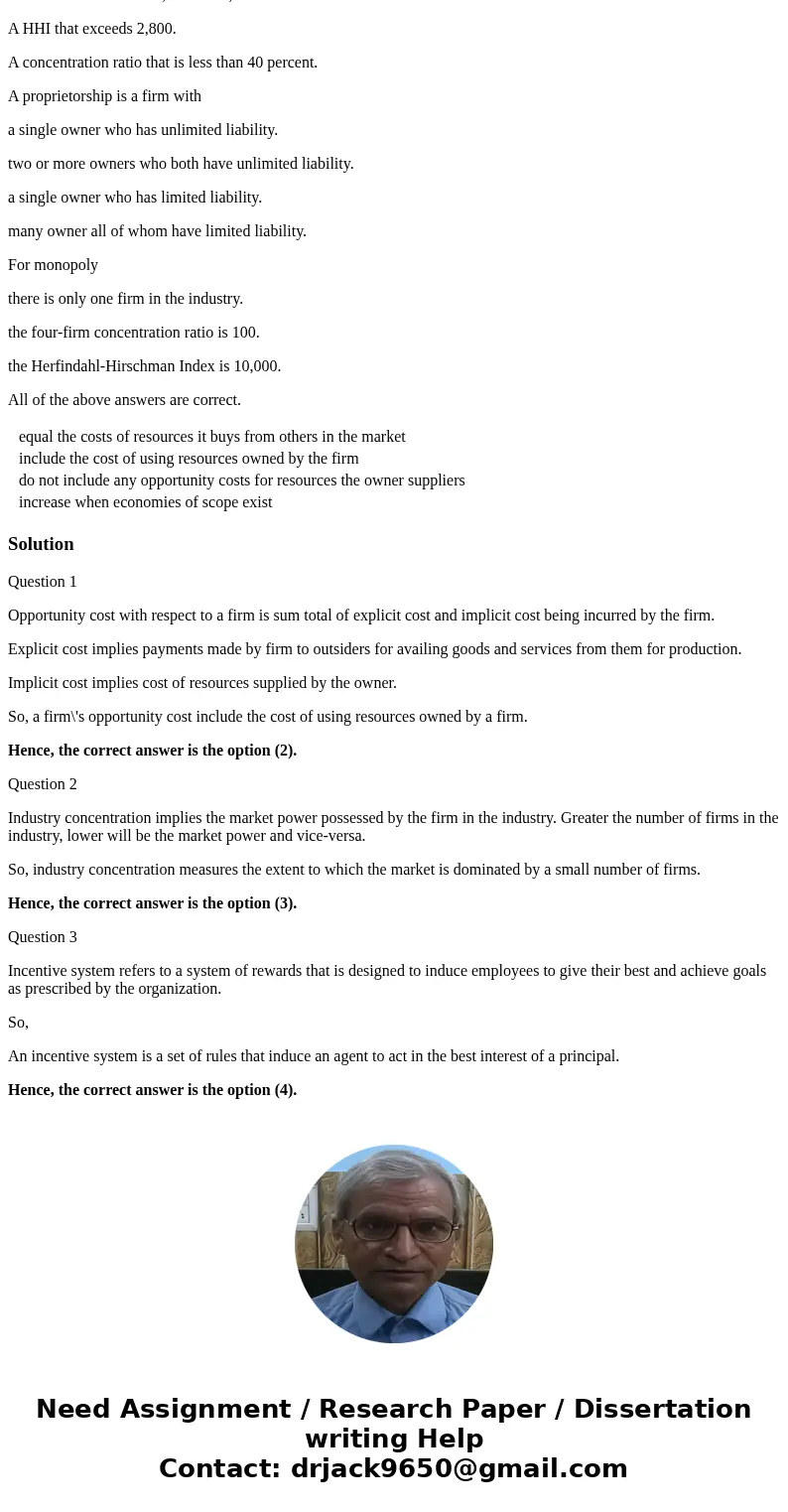A firms opportunity costs equal the costs of resources it b
A firm\'s opportunity costs ________.
equal the costs of resources it buys from others in the market
include the cost of using resources owned by the firm
do not include any opportunity costs for resources the owner suppliers
increase when economies of scope exist
Industry concentration measures the extent to which
products are differentiated by the firms in the industry.
consumers are geographically concentrated.
the market is dominated by a small number of firms.
the industry executives concentrate on their product.
An incentive system is a
method of organizing production that uses a managerial hierarchy.
method of production that implements an assembly-line process.
method of organizing production that uses a market-like mechanism inside the firm.
set of rules that induce an agent to act in the best interest of a principal.
Which of the following are characteristics of a proprietorship?
I. Single owner
II. Limited liability
I only
II only
both I and II
nether I nor II
Which of the following indicates a high degree of competition?
A concentration ratio that is greater than 60 percent.
A HHI that is between 1,800 and 2,800.
A HHI that exceeds 2,800.
A concentration ratio that is less than 40 percent.
A proprietorship is a firm with
a single owner who has unlimited liability.
two or more owners who both have unlimited liability.
a single owner who has limited liability.
many owner all of whom have limited liability.
For monopoly
there is only one firm in the industry.
the four-firm concentration ratio is 100.
the Herfindahl-Hirschman Index is 10,000.
All of the above answers are correct.
| equal the costs of resources it buys from others in the market | ||
| include the cost of using resources owned by the firm | ||
| do not include any opportunity costs for resources the owner suppliers | ||
| increase when economies of scope exist |
Solution
Question 1
Opportunity cost with respect to a firm is sum total of explicit cost and implicit cost being incurred by the firm.
Explicit cost implies payments made by firm to outsiders for availing goods and services from them for production.
Implicit cost implies cost of resources supplied by the owner.
So, a firm\'s opportunity cost include the cost of using resources owned by a firm.
Hence, the correct answer is the option (2).
Question 2
Industry concentration implies the market power possessed by the firm in the industry. Greater the number of firms in the industry, lower will be the market power and vice-versa.
So, industry concentration measures the extent to which the market is dominated by a small number of firms.
Hence, the correct answer is the option (3).
Question 3
Incentive system refers to a system of rewards that is designed to induce employees to give their best and achieve goals as prescribed by the organization.
So,
An incentive system is a set of rules that induce an agent to act in the best interest of a principal.
Hence, the correct answer is the option (4).


 Homework Sourse
Homework Sourse